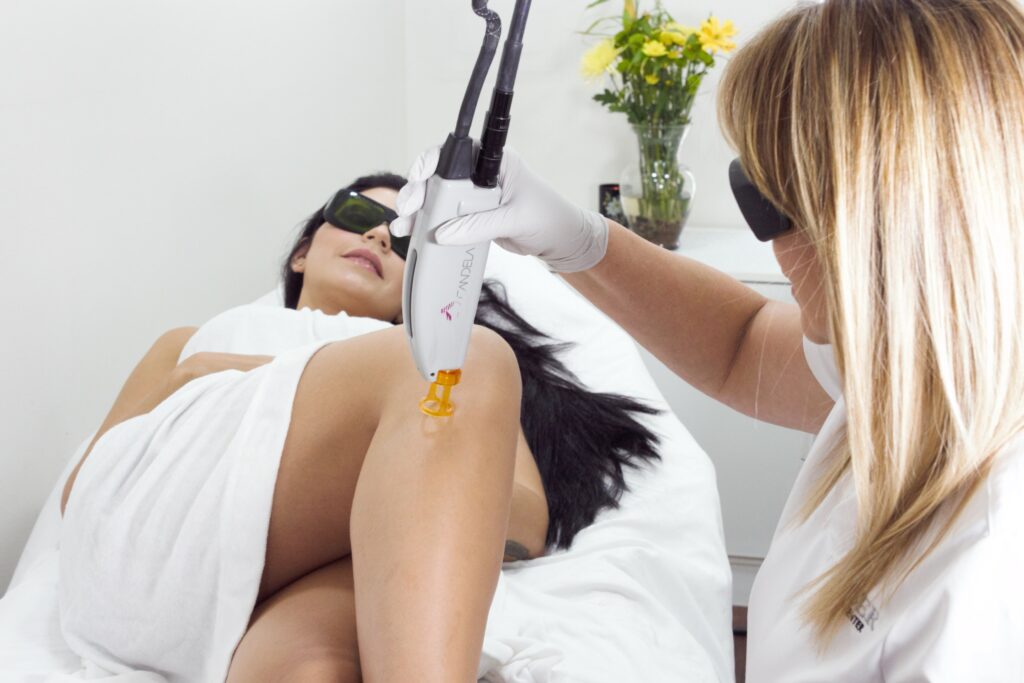Introduction
In the pursuit of enhancing our appearance and well-being, many people turn to aesthetic and medical treatments. Although both can contribute to a better quality of life and self-confidence, there are fundamental differences between them. However, they also share some similarities. This article will explore in detail what distinguishes these treatments, as well as their common points, to help you make informed decisions about your health and appearance.
What are Aesthetic Treatments?
Aesthetic treatments are primarily designed to improve a person’s physical appearance. These procedures are not usually necessary from a medical standpoint, but they can enhance an individual’s quality of life by increasing their self-esteem and personal satisfaction. Some examples include:
- Botulinum Toxin Injections (Botox): Used to reduce expression lines and wrinkles.
- Dermal Fillers: Help restore volume and smooth facial folds.
- Laser Procedures: Improve skin texture, reduce spots, and remove unwanted hair.
- Non-invasive Body Treatments: Such as cryolipolysis or cavitation for reducing localized fat.
What are Medical Treatments?
On the other hand, medical treatments are aimed at treating diseases, ailments, or medical conditions that affect an individual’s health. These treatments may be necessary to prevent health complications or improve the patient’s quality of life. Some examples include:
- Corrective Surgeries: Such as surgery to correct birth defects, vision problems, or extensive scars.
- Dermatological Treatments: For conditions like severe acne, eczema, or psoriasis.
- Hormone Replacement Therapies: To treat hormonal imbalances.
- Invasive Procedures: Such as cardiac or neurological surgeries to treat serious conditions.
Key Differences between Aesthetic and Medical Treatments
1. Purpose and Necessity
The main difference between these two types of treatments lies in their purpose. Aesthetic treatments are performed to enhance appearance and are not necessary from a medical standpoint. In contrast, medical treatments are essential for treating or managing health issues.
2. Training and Certification of Professionals
Professionals performing medical treatments, such as surgeons and dermatologists, must have extensive medical training, including years of education and practical training, in addition to certifications and licenses to practice. While aesthetic treatments can also be performed by trained professionals, such as aesthetic doctors or cosmetologists, they often require less academic training and more specific certifications in the aesthetic field.
3. Procedures and Risks
Medical treatments are usually more invasive and may require anesthesia, hospitalization, and a longer recovery time. This also means they typically involve greater risks and potential complications. On the other hand, many aesthetic treatments are non-invasive or minimally invasive, with shorter recovery times and fewer risks.
Similarities between Aesthetic and Medical Treatments
1. Pre-treatment Evaluation
Before undergoing any treatment, whether aesthetic or medical, a thorough evaluation is crucial. Professionals must know the patient’s medical history, expectations, and any conditions that might affect the treatment. This evaluation is essential to ensure the safety and effectiveness of the procedure.
2. Importance of Quality and Experience
Regardless of the type of treatment, it is vital to consult qualified and experienced professionals. The quality of the treatment and the experience of the professional can make a significant difference in the results and the safety of the procedure.
3. Results and Follow-up
Both aesthetic and medical treatments require proper follow-up to assess the results and manage any complications that may arise. In some cases, additional treatments or adjustments may be needed to achieve the desired results.
Conclusion
Both aesthetic and medical treatments offer options to improve a person’s quality of life and appearance, although their objectives and methods differ. It is crucial to understand the differences and similarities between them to make informed and safe decisions. It is always advisable to consult qualified professionals and carefully consider the risks and benefits of any treatment. Health and well-being should always be the priority, whether you seek to enhance your appearance or treat a medical condition.


